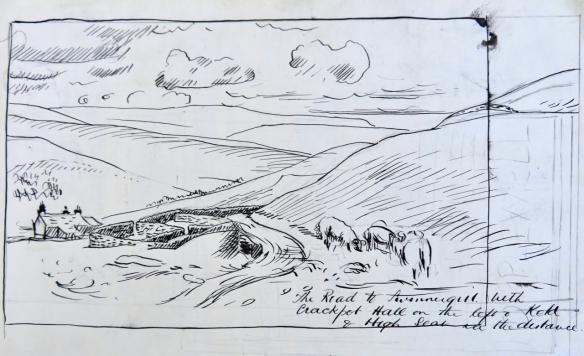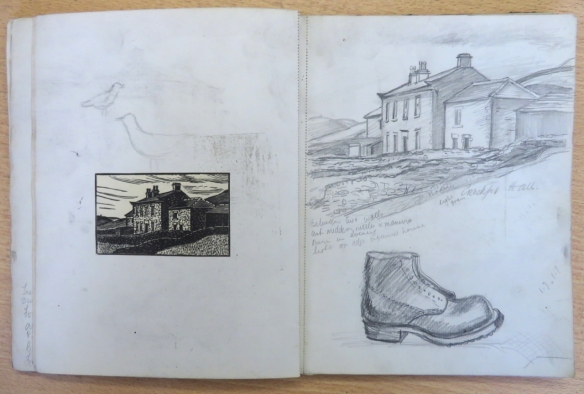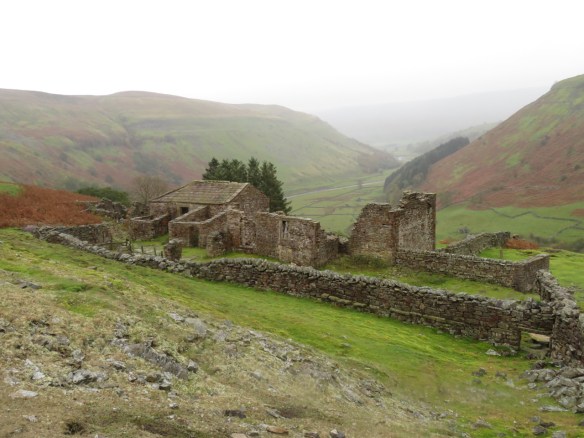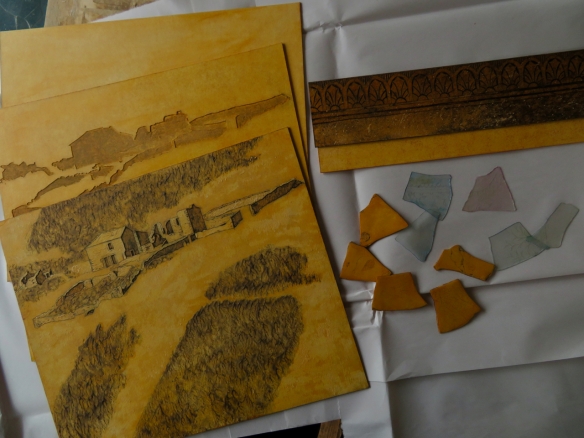Happy new year! In 2020 I am spending the next six months holed up in my studio making the final prints for my solo show at the Dales Countryside Museum in July. ‘The View from the Fells: In the Footsteps of Marie Hartley’ will be on from 10th July – 4th November 2020 and will feature a new body of work inspired by Marie Hartley’s and Ella Pontefract’s work on the three books ‘Swaledale’, ‘Wensleydale’ & ‘Wharfedale’. I’ve spent a year reprinting Marie’s wood engravings, researching her work and visiting some of the places written about in the books. I’ve got a long list of ideas, some of which probably won’t see the light of day, and I’m now creating new prints that have been inspired by some of the things that I’ve seen. It has been really wonderful to spend time in areas of the Yorkshire Dales that I’ve never visited before and to discover some of the places that Marie loved. The things that I’ve found inspiring have been the chance encounters with wildlife, the way that the land has been shaped by human intervention (meadows, buildings, sheepfolds, drystone walls) and the way the land changes in different weathers and times of day/year. I have also visited specific places referred to in the books with a view to discovering for myself why they stood out for Marie and Ella and to see how much they’ve changed. One of these places is Crackpot Hall which is on the path between Muker and Keld.

A page from Marie’s sketchbook.

These pages from Marie’s sketchbook also show the wood engraving that was used as an illustration in ‘Swaledale’
Crackpot Hall gets its name from the Viking word ‘pot’ meaning a deep hole and ‘crack’ the old english word for crow. There is a good online article with photos that can be viewed HERE. It is an eighteenth century hunting lodge which became a farmhouse and was occupied by the Harker family during the 1930s at the time that Ella and Marie were writing ‘Swaledale’.
“The farm-house of Crackpot Hall, gazing defiantly across at Kisdon from its lofty site, arouses one’s curiosity and imagination the moment it is seen from the village of Keld, from East Gill, or from Muker and the hills beyond”
It is indeed a very special place and I first discovered it for myself just before I began research for this project. My husband and I were running a circular route from Muker (along the right hand side of the Swale to Swinner Gill and back via the Kisdon Force and the Pennine way on Kisdon). We came upon the ruins sitting high above the Swale and I was really taken with both its position in the landscape and the fact that so much evidence of the lives of the previous inhabitants remained. There was an old tin bath, the range still has bits of ornate grate lying next to it and shards of patterned pottery unearthed by rabbits lay on the hillside below it.

When I began the project and discovered Marie’s beautiful wood engraving of it before its dereliction, I knew I’d end up making work about it. I’ve been back repeatedly to Swaledale and the whole area from Muker to Birkdale has become a focus for a large proportion of the work that I’m making. One of the reasons that we have decided to call the exhibition ‘View from the Fells’ is that I am a fellrunner and I often run the routes to gain inspiration. This enables me to cover ground quickly and to get to places that I wouldn’t normally get to when walking. I sometimes take small ‘trods’ as opposed to obvious footpaths which also means that I encounter wildlife that perhaps I would have missed on the main thoroughfares. The beauty of running is that I can work on ideas or solve printmaking conundrums whilst my body is engaged in a physical activity but my mind is able to run free. There is a particular clarity of thought that I get which I don’t have at any other time.
Marie and Ella wrote about how the foundations of the farmhouse had slipped over the years, probably due to the mining in the area, and that “the tops of the doors and windows are all at angles, and the bedroom floors tilt like the rolling deck of a ship”. They focussed much of the chapter on the children of Crackpot Hall and most notably Alice, the youngest child of the Harker family. They wrote about her as the spirit of the moor, mischievous and wild. Years later, David Almond (a children’s book illustrator) went in search of Alice and there is a wonderful Radio 3 programme about her and Crackpot Hall as well as Marie and Ella’s encounter with her. You can listen to it HERE.
Before Christmas I created a collagraph print inspired by Crackpot Hall. There are 15 separate elements that are printed in layers to create the whole image and I have used drawings of some of the pottery shards and a piece of the range to draw focus to the fact that it was once a home for a succession of farmers and lead miners:

The printing plates: they are made from cardboard and textured using cutting techniques, polyfilla, gesso and carborundum paste. The small plastic ones are drypoint that I’ve scratched the decorative elements of the pottery into.

The finished collagraph print.
I have also taken photographs from the spot at which Marie created her sketch for the wood engraving featured in the book. I have the glimmer of an idea of how I might use them to draw from and create a layered image showing the decline of the house into ruins.

(NB: As a sidenote, this particular visit was particularly memorable as it resulted in me being in hospital for two days after pushing my way through overgrown bracken and ending up with a 2cm piece of woody stem embedded deep in my leg. The surgeon tried to remove it but couldn’t see it without an ultrasound machine and so it is still in there! Fortunately, it is gradually causing less bother and I think I will just live with it until it either dissolves (if that’s possible) or works its way out. I feel I ought to make this mishap worth the pain by at least creating one bit of work from that view point!)
